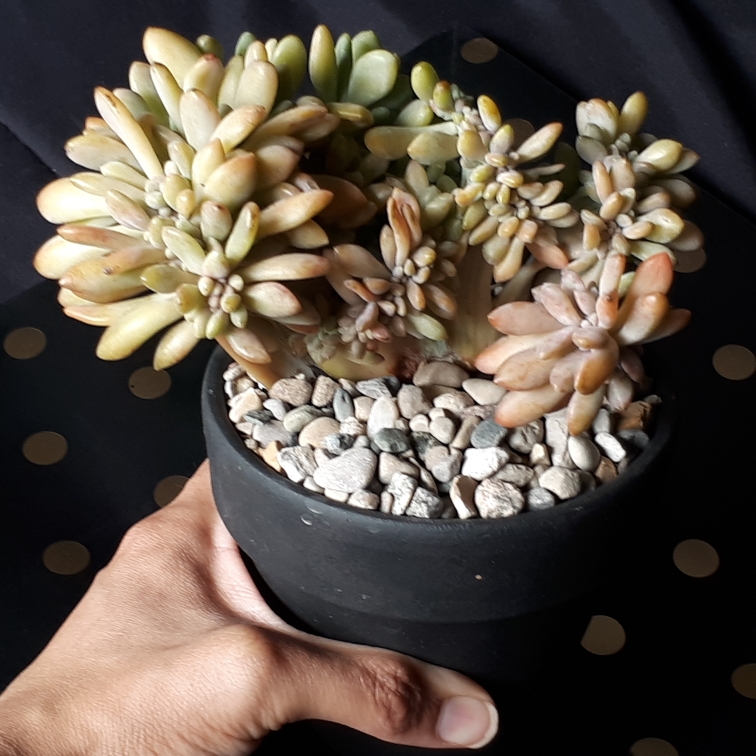
x Cremneria 'Expatriata' cristata
Crested Cremneria 'Expatriata'
Cremneria 'Expatriata' cristata is the crested form of Cremneria 'Expatriata'. Though sometimes incorrectly marketed as an echeveria, it is the offspring of Cremnophila linguifolia and Echeveria amoena 'Microcalyx', making it a cross-genus hybrid. When flowering it produces pinkish orange blooms, with small leaves growing along the stalks of the flowers. Cremneria 'Expatriata' cristata is the standard cremneria 'Expatriata' in its crested form. Cresting is a mutation that occurs as the plant grows: Instead of growing more branches or stems, the plant flattens out and produces a wide flat surface. The leaves will generally grow along the top ridge of this wide growth, and they are very compact. Cresting is something that happens naturally and can't be forced, so crested forms are more rare than their non-crested counterparts. Non-crested versions of this succulent grow low to the ground, but are still distinctively caulescent. The crested version features a very wide, often naked stem with a dense rosette leaf crown. Cremneria 'Expatriata' will do best in well draining soil, within a location that receives plenty of sunlight.
-
Full sun to partial shade
-
Occasional watering
-
Not Frost hardy
-
Free draining
Common name
Crested Cremneria 'Expatriata'
Latin name
x Cremneria 'Expatriata' cristata
type
Perrenial
family
Crassulaceae
ph
6.0 - 8.0 Acid - Neutral
Plant & bloom calendar
-
Best time to plant
full grown dimensions
 0.90 M
0.10 M
0.90 M
0.10 M
x Cremneria 'Expatriata' cristata
Cremneria 'Expatriata' cristata is the crested form of Cremneria 'Expatriata'. Though sometimes incorrectly marketed as an echeveria, it is the offspring of Cremnophila linguifolia and Echeveria amoena 'Microcalyx', making it a cross-genus hybrid. When flowering it produces pinkish orange blooms, with small leaves growing along the stalks of the flowers. Cremneria 'Expatriata' cristata is the standard cremneria 'Expatriata' in its crested form. Cresting is a mutation that occurs as the plant grows: Instead of growing more branches or stems, the plant flattens out and produces a wide flat surface. The leaves will generally grow along the top ridge of this wide growth, and they are very compact. Cresting is something that happens naturally and can't be forced, so crested forms are more rare than their non-crested counterparts. Non-crested versions of this succulent grow low to the ground, but are still distinctively caulescent. The crested version features a very wide, often naked stem with a dense rosette leaf crown. Cremneria 'Expatriata' will do best in well draining soil, within a location that receives plenty of sunlight.









